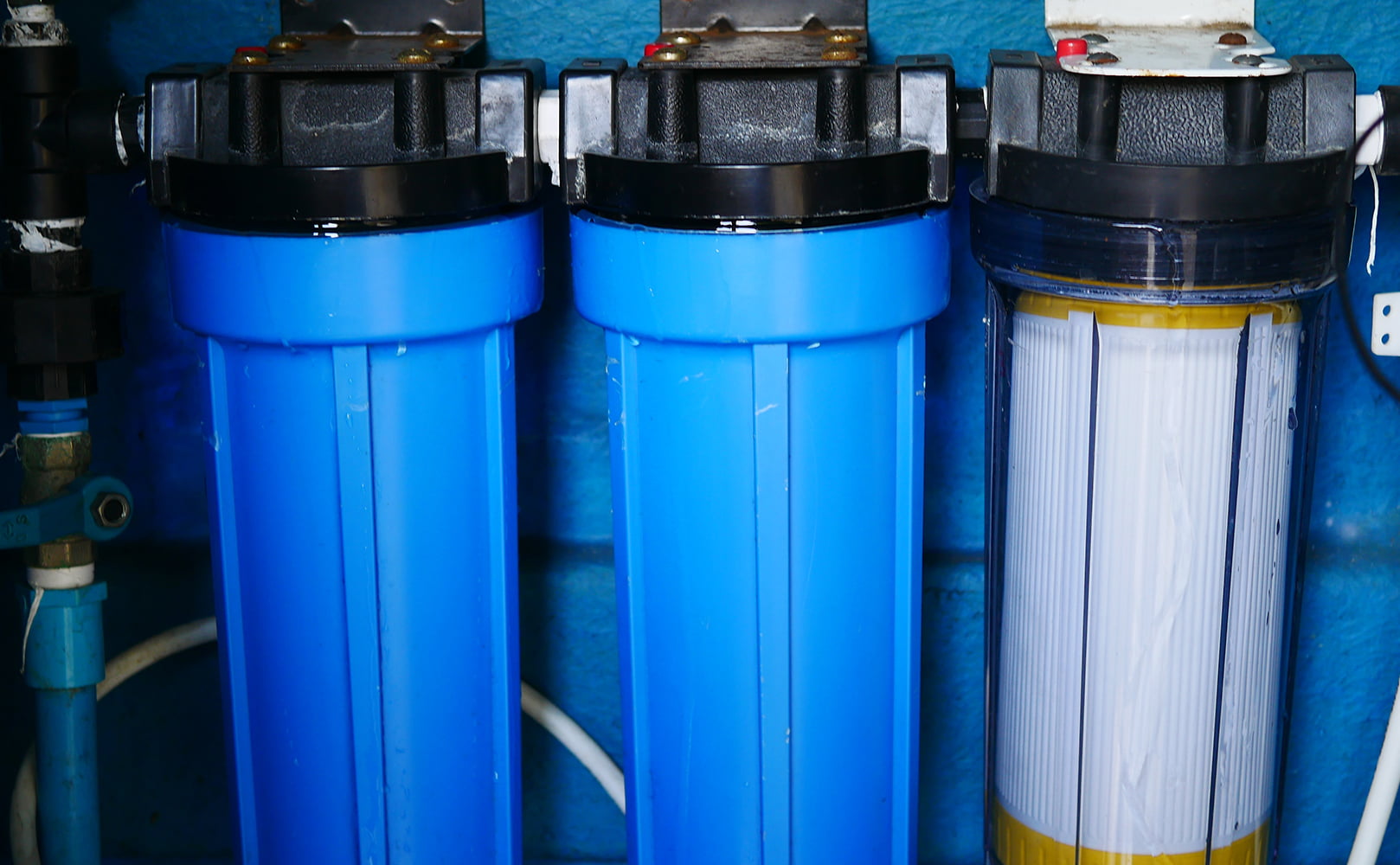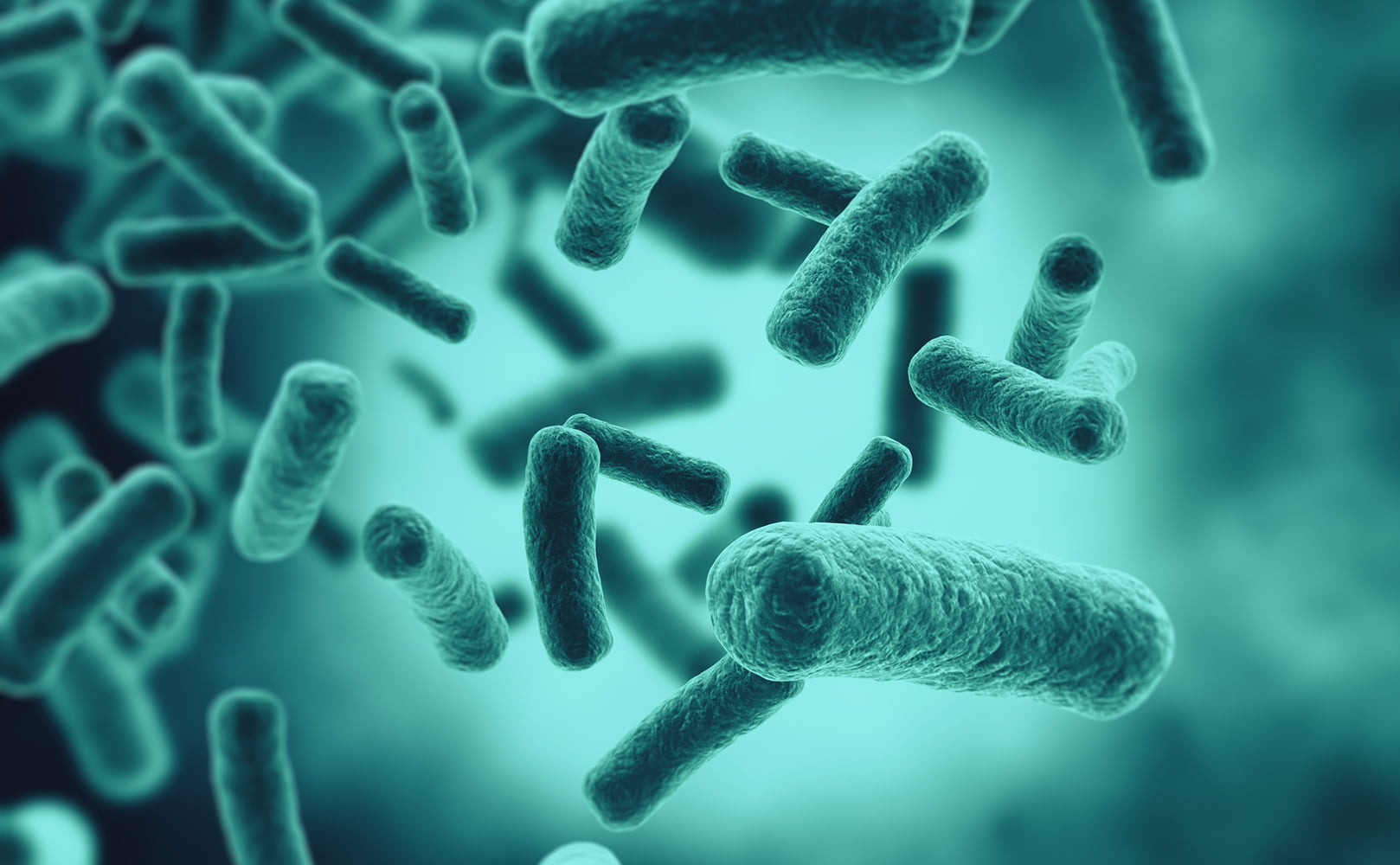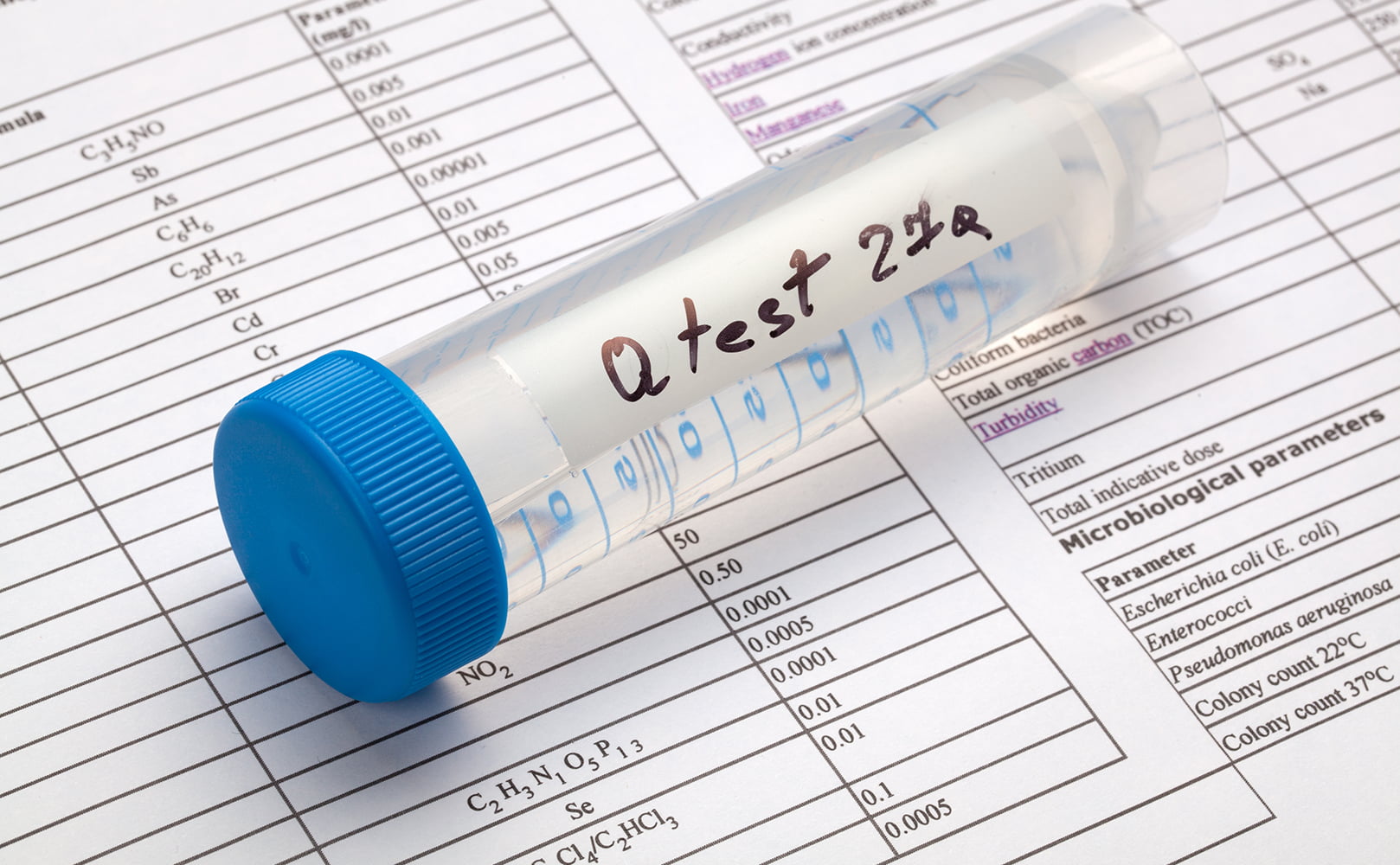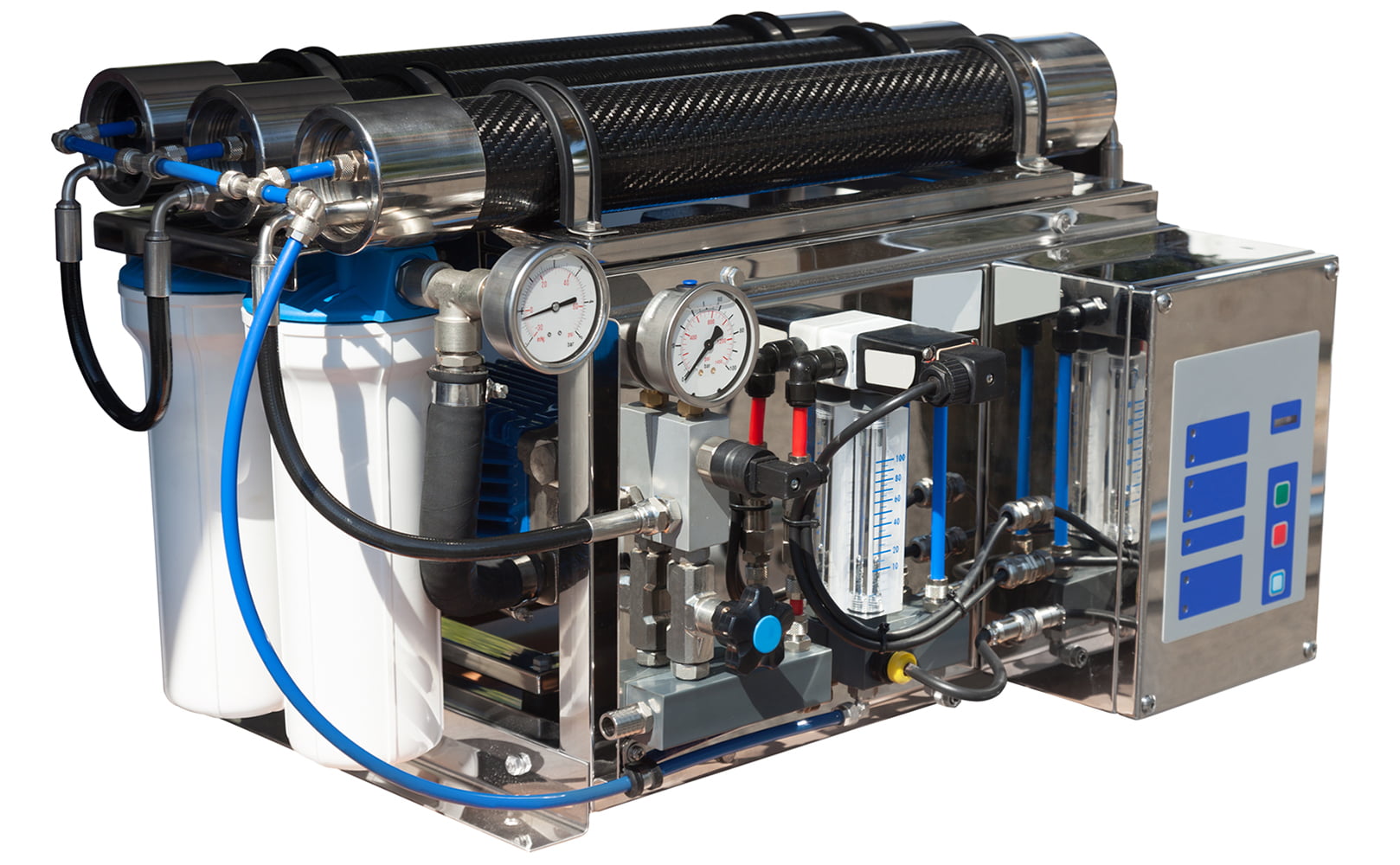Do I Need a Whole House Water Filter? Let’s Find Out!
Written by: Gene Fitzgerald // Last Updated: Dec 5, 2022
This page may contain affiliate links. If you buy a product or service through such a link we earn a commission at no extra cost to you. Learn more.
According to the Natural Resource Defense Council (NRDC), over 15% of people in the US, approximately 70 million, are at risk of contamination from unsafe water. Are you worried you might be at risk too?
Unfortunately, the numbers are more significant in rural areas or for those who use water from a well. While some people compare drinking tap water to ingesting motor oil, we wouldn’t go that far.
However, the fact that Americans spent $31 billion on bottled water in 2018 alone is enough to ring some bells. Thankfully, installing a whole house water filter is usually enough to make your water fit for consumption.
But they can be worth some serious amounts of cash. If you are not sure whether you really need one or which one to buy, you might just be tempted to stick to your not-so-clean water supply.
Let’s help you sort your dilemma and get to the bottom of your problem, or let’s say water tank!
Key Takeaways
- Whether you need a whole house water filter depends on the quality of water in your home, what you are using the water for – think drinking vs washing dishes – and what it is that you want to achieve by installing a whole house filter.
- A proper system will give you safer drinking water at every tap, and protect your plumbing and appliances among other benefits.
What Is a Whole House Water Filter?
Short answer: It’s a blessing! The long answer is as follows:
A whole house water filtration system cleans and purifies every drop of water that enters your home. So every time you turn on a faucet, whether to drink, cook, shower, do the dishes or laundry, the water is free from unwanted contaminants.
But not all water is equally dirty or clean, and therefore there is no one-size-fits-all scenario when it rolls down to sophisticated water filtration. Hence, you have numerous options to select from depending on:
- The quality of water at your home
- Whether you use a municipal supply or have a private well
- The size of your family
- And, finally, your idea of clean water or what you want to achieve
Thanks to NSF certifications and third-party tested reports, you can fully trust most whole house filtration systems.
Why Do You Need a Whole House Filter?
Now, before you are grateful to the bottled water bottle on your desk, know that a quarter of bottled water is actually potable tap water. Let that sink in for a bit.
And then move onto why you need a whole house water filtration system that works:
Much of the US water supply is very hard, full of mineral content, which can remarkably affect the taste of water. However, many other underlying impurities do not affect how your water tastes and smells. And they are certainly not visible.
Hence, let’s discuss all the problems that can be addressed by installing a whole house filter system.
1. Contaminants: What’s in Our Water?
Unfortunately, hundreds of contaminants can be lurking in your water, unable to be seen by the naked eye. While some are potentially harmless, others could become fatal over time.
Some water contaminants may be naturally occurring minerals, whereas others are byproducts of irresponsible human activities. In addition, well water absorbs different contaminants and pollutants from the ground. As a result, it is at a higher risk of being contaminated, for example with dangerous unknown pathogens from landfills and septic systems.
It is, however, essential to remember that the federal government requires tap water to be filtered, disinfected, and tested for dozens of contaminants such as cryptosporidium and giardia viruses. The two viruses are the leading cause of diarrhea.
Here are the most dangerous and common contaminants swimming in your water.
Chlorine/Chloramine
Chlorine and chloramines are chemical disinfectants intentionally added to public water to eliminate dangerous disease-causing bacteria and other microorganisms. The downside is they can interact with naturally occurring organic matter, producing terribly harmful byproducts, commonly known as DBPs or disinfection byproducts.
Unfortunately, DBPs are toxic if consumed in large amounts over a long period. They are linked to liver and kidney problems, cancer, infertility, and difficulties in reproduction.
Not to forget, chlorine is the leading cause of weird-smelling water with bad taste.
Most whole house water systems will effectively treat chlorinated water. But if you are dealing with chloramine, you might need to hunt for a specific model since it’s more complex to filter.
Heavy Metals
Heavy metals include:
- Lead
- Arsenic
- Copper
- Mercury
- Barium
- Iron
Drinking water with high amounts of heavy metals is a significant cause of diseases. In case of iron and manganese, you’ll also be dealing with staining issues.
Microorganisms
Microorganisms commonly found in well water include:
- Viruses
- Parasites
- Bacteria
Pesticides/Herbicides
Pesticides and herbicides (which are just one type of pesticides) used on agricultural land eventually runoff to groundwater. These pollutants can pose a risk to public health.
2. Bad Taste and Odor
If you are sick of foul-smelling water around your house, it’s obvious that your water is contaminated. This is true in places where the water has high chemical content or contains microorganisms.
If you experience a rotten egg-like smell, it suggests the water contains hydrogen sulfide – usually well water.
In contrast, a metallic taste signifies the presence of heavy metals like copper, manganese, or iron. Similarly, bitter-tasting water may be a result of overall high total dissolved solids (TDS).
3. Old House/Plumbing
If you live in a house made before 1986, chances are, the plumbing in your home is at least partially made of lead.
Lead plumbing was banned for a reason as it poses numerous health risks, especially for growing children. Lead can leach into your water, making you susceptible to a host of diseases, including symptoms like:
- Fatigue
- Headaches
- Insomnia
- Nausea
- Constipation
For children, the plight is far more troubling. It can cause multiple lifelong cognitive disorders and inhibit brain development.
4. Well Water
You might be naive to think that well water is free from all of the contaminants. Sorry to burst the bubble, water from a well (public or private) might be far more contaminated than tap water. It requires thorough filtration before being fit for residential usage, not only drinking.
Owners of private wells are responsible for the quality of their water. They should inspect their wells every year for mechanical problems, coliform bacteria, nitrates, and general cleanliness.
In most cases, a normal sediment or carbon filter won’t do the job. Only a water test will highlight which contaminants are active in well water, and a suitable solution must be addressed.
5. Improving the Life of Appliances
Contaminated water is not only harmful to humans but appliances as well. For example, water high in sediment or iron can lead your water-based appliances to premature failure.
Your water heater, dishwasher, and washing machine will be grateful to you if you save them from the perils of dirty water.
6. Dingy and Stained Clothes
Are your whites never as white, or your colored clothes are never as bright as they ought to be. Unfortunately, this is often the truth associated with untreated water.
If water is high in iron, it can stain your clothes or even the toilet bowl too. Not to mention unsightly scale deposits on fixtures and fittings and cloudy glassware.
7. Testing
You can never really tell what you’re dealing with unless you test your water supply directly.
An alternative is to check the annual water report, although some contaminants in your water may go unnoticed if you go this route.
Numerous contaminants need to be filtered out before you can use the water for showering, cooking, or drinking.
Types of Whole House Water Filters
It’s evident that each household is dealing with a unique set of water problems and budget.
So here, we discuss the most potent whole house water filter types aka methods and filter media that have different purification capabilities. Depending on your water conditions, we are advocates of mixed media or dual/triple layer filtration to achieve maximum purification.
Activated and Catalytic Carbon Whole House Filters
Carbon-based whole house filters are one of the most common and economical systems to buy and maintain. But do they provide out-and-out filtration? Sometimes yes, sometimes no. Let’s see why.
According to the EPA, activated carbon filters can remove:
- 32 identified organic compounds
- 14 pesticides and 13 herbicides
More specifically, activated carbon filters can remove:
- Chlorine
- Pharmaceutical runoffs
- Volatile organic compounds (VOCs)
- Bad taste and odor
- Disinfection byproducts
- And a few other substances
However, activated carbon requires long contact time to filter chloramines and other stubborn contaminants. That’s where catalytic activated carbon or simply catalytic carbon comes into play. Its chlorine/chloramines capacity is much better.
Besides, the performance of carbon filters will depend on the flow and temperature of the water. The lower the pressure and the cooler the water, the more effective filtration will be.
For activated carbon, another factor is the form: whether it is granular activated carbon (GAC) or a solid carbon block.
Bottom line: Make sure you know what contaminants you are dealing with before investing in a carbon-based filtration system.
Sediment Filters
Sediment filters remove traces of dust, rust, sand, silt, and other debris by trapping them between their sieve-like filter media. They act as a physical barrier against particulates that could clog the plumbing and reduce the life of water-based appliances.
Sediment filters are usually pre-filters in a mixed media filtration system that prevent the latter filters from clogging soon. Filter cartridges for sediment filters are rated according to micron size, ranging from the sub-micron level to 50 microns or even higher.
A higher micron level signifies a larger pore size suitable to remove dirt. In contrast, a smaller micron rating like 1 micron implies more thorough filtration, including reducing tiny cryptosporidium parasites and cysts. But a smaller micron rating also affects the flow rate.
Iron and Other Heavy Metal Filters
“I can’t wait to drink reddish-brown water that also stains sinks and toilets,” said no sane person ever. No doubt, the presence of iron and heavy metals can tremendously affect water quality.
Specialized iron-reducing filters are usually the answer here. They often apply pre-oxidation followed by a carbon media bed or greensand.
Whole House RO Systems
RO systems (reverse osmosis) are one of the most effective forms of water filters available. The process involves forcing water through a semipermeable membrane that rejects even the most dangerous contaminants.
As a result, your water is not only free of unpleasant odor, taste, or texture, it’s almost pure H2O.
Whole house reverse osmosis systems are much better than standard carbon-based systems at removing contaminants but come with a hefty price tag too. They can cost several thousand dollars and are relatively costlier to maintain. Moreover, they require a large amount of space to be set up.
And they are not exactly eco-friendly. No matter how efficient, reverse osmosis water purification will always waste some water. What’s worse is that RO systems will not only purify the bad boys but also filter out healthy minerals.
Your drinking water will technically not be wholesome unless an RO system is upgraded with a remineralization filter.
UV Systems
Ultraviolet (UV) systems utilize UV light to purify water. UV systems are a safe, stable, and chemical-free form of filtration that disinfect your water.
Most UV filters are space-efficient and have a smaller eco-footprint compared to other filtration methods. But what does it remove? Nothing; a UV water filter simply destroys up to 99.9% of microorganisms (bacteria, viruses and other) present in your water. So if you are concerned solely with living organisms in your water, this is your answer.
Unfortunately, they are not effective at removing chlorine, or chemicals, or dissolved impurities.
Moreover, any cloudiness, discoloration, or dirt in the water will hamper a UV light’s ability to eliminate microorganisms. Therefore, having a UV light filter as an additional stage in a whole house water filtration system is the most suitable application.
(Water Softeners)
Water softeners are not exactly filters but ‘water purifiers’. They use ion-exchange technology to purify water. As water is passed through a granular resin bed, it traps calcium and magnesium, the culprits that make your water hard and your life miserable.
In other words, a water softener reduces scale buildup.
If you have very hard water in your home (read: stiff laundry, soap scum on shower cabinets, scale buildup in pipelines, low water pressure, appliances needing constant repairs), a water softener is the ideal solution.
They can be used stand-alone or installed after a whole house water filter to assist in water purification.
Thankfully, most water softeners are not very expensive. They are easy to install and maintain, and often last more than a decade. But remember, they don’t filter your water and can’t replace a whole house filter.
Pros of Whole House Water Filtration Systems
If you are unsure about the quality of water supplied to your household and don’t want to risk your family’s health, a whole house water filter is all you need. Here is why:
Clean Water for Peace of Mind
Have you ever wondered whether you or your family gets sick more often because of the water in your house? Installing a whole-house filter will give you complete peace of mind that your family is safe from harmful chemicals, waterborne diseases, and life-threatening illnesses caused by heavy metals. It’s worth the trouble, isn’t it?
Entire House Gets Filtered Water
Did you know that chlorine, a significant contaminant, doesn’t only enter your body through drinking but through evaporation too?
So if you are showering in chlorinated water, you are exposing yourself to far greater risk. In fact, every time you run a dishwasher, some of the water evaporates in your surroundings.
Similarly, sophisticated whole house water filtration systems leave no need to install separate filters elsewhere in the house. No countertop filters, no shower head filters, just one system–one appliance to maintain!
Protects Plumbing
A whole house filtration system can protect the plumbing around your house by filtering out sediment and high levels of iron. As a result, you save tons of money on repairs and new plumbings.
Healthy Water
Undoubtedly, water is life. But unsafe water can easily be the opposite of that. More than 5 million people die globally each year due to contaminated drinking water and lack of hygienic practices.
Thankfully, a smart investment like whole house filtration is often all you need to ensure the provision of safe and purified water around your home.
Improves Water Aesthetics
Solid water filters add a finishing touch to your water. You will quickly see an improvement in the texture and smell. Not to forget, your water will taste just like it’s supposed to be – fresh, pure and wholesome.
Save Money on Bottled Water
Many households spend a big chunk of their monthly budget purchasing bottled water. Unfortunately, apart from burning a hole in the pocket, it adds up to plastic waste too.
Besides, most bottled water is not exactly as pure as you might think it is. Enter whole house filters, and you can wave permanent farewell to bottled water.
Cons of Whole House Filters
We can go on and on about the benefits of whole house water filters. But it’s not the epitome of success for every household. Some of you might benefit more from individual point-of-use filter systems or maybe are short on space to install one. So here are a few cons for this type of system.
Cost
Whole house water filters can range from $300 to $5000 upfront. Throw in the potential expense of professional installation, replacement filters, and yearly maintenance; the cost adds up.
While it may be the only solution to relieve you of your woes of unsafe water, a whole house water filter is not within everyone’s budget.
Space
Space is generally an issue in most small modern homes, and these systems are not exactly compact. Not to forget, a whole house filtration system features permanent installation, and that’s often a no-go for rentals.
Effectiveness
Each system comes with its sets of strengths and drawbacks that complicate the decision.
For instance, you might be dealing with an alarming number of contaminants that can only be eliminated using an RO system. Unfortunately, RO systems waste tons of water.
If you have any thoughts about the question, do I need a whole house water filter, please don’t hesitate to leave a comment below!
Information provided on BOS is for educational purposes only. The products and services we review may not be right for your individual circumstances.
We adhere to strict editorial guidelines. Rest assured, the opinions expressed have not been provided, reviewed, or otherwise endorsed by our partners – they are unbiased, independent, and the author’s alone. Our licensed experts fact-check all content for accuracy. It is accurate as of the date posted and to the best of our knowledge.






